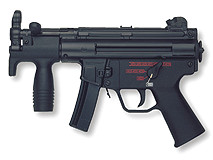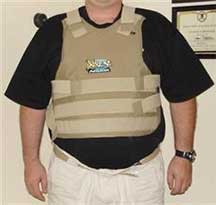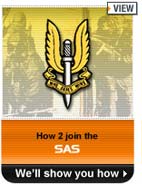SAS - Close Protection
Close protection or Bodyguarding skills were amongst the first developed by the SAS Counter Revolutionary War (CRW) wing in the mid 1970s. These skills were in high demand by Britain's allies in the Middle East, many of whom requested SAS training for their own bodyguards.
A need for better protection closer to home was highlighted when, in 1974, an attack on Princess Anne and her husband, Mark Phillips, occurred. Whilst the attack was unsuccessful, the event revealed some serious deficiencies in the Royal Protection Group's equipment and protocols. The SAS CRW wing were called in to evaluate procedures and to train the men themselves. Close ties between the Regiment and the Royal Family were quickly forged and the Royals have subsequently taken part in a series of hostage-rescue exercises.
The SAS have carried out close protection for a variety of VIPs including Prime Minister John Major in Bosnia. Much of today's close protection tasks are carried out by various SAS-trained units such as the Royal Military Police.
Close protection profiles
Different bodyguarding scenarios require a different profile for the close protection team, the choice of adopted profile often as much a political as a practical consideration
- military overt protection
most commonly seen when VIPs visit war zones, the overt profile sees the CP members putting on a show of strength. The bodyguards take on a distinctively military aspect. Body armour may be worn over the clothing of both the CP unit and the VIP and weapons (smgs and carbines) are carried in plain sight. In this scenario the overt profile is intended to act as a deterrent against attack and to ensure that the CP team can react with maximum firepower.
- low-key overt protection
when a more low-key profile is desirable, the CP team aim to blend in more with their surroundings. Civilian clothing, usually suits, are worn. Weapons (pistols and smgs) are typically carried concealed beneath jackets. The CP team still maintains a visible presence around the VIP who is free to interact with the public.
- covert protection
in this type of protection, the bodyguards are not visible but remain close at hand on standby to react to as needed.
Close Protection Equipment

HK MP5k  C8 CQB 
Lightweight kevlar body armour
|
|
Close Protection Techniques
The SAS developed many of the procedures and protocols employed by close protection units around the world. Some of the public ally known procedures include:
- route reconnaissance
CP teams will recon the planned routes of their VIP's motorcades, looking for potential ambush sites, traffic bottlenecks and choke points.
- offensive driving
in the event of an attack on the VIP's motorcade, the cars themselves can be used as weapons, ramming attacking vehicles or assailants and punching a hole through a barricade. Similar techniques were taught to 14 Company operators in Northern Ireland.
- embussing/debussing
getting the VIP safely in and out of their vehicle is a complex problem that requires a great deal of planning and practise. The SAS developed a series of procedures for dealing with attacks during embussing and debussing.
- venue reconnaissance
as with vehicle routes, an advance party from the SAS slose protection team will give any planned venue a detailed overlook. In case of attack, emergency exits and rendevous points will be established in and around the venue.
- close quarters battle (CQB)
bodyguarding may require firearms to be used at close quarters, often in tight spaces surrounded by colleagues and innocent bystanders. Being able to pick out and safely engage a hostile in such scenarios takes constant training. The SAS developed a range of techniques for using pistols and other weapons in close quarters. All these techniques center around shielding the VIP, keeping them out of the line of fire and moving them to a safe location.
(internal link)










